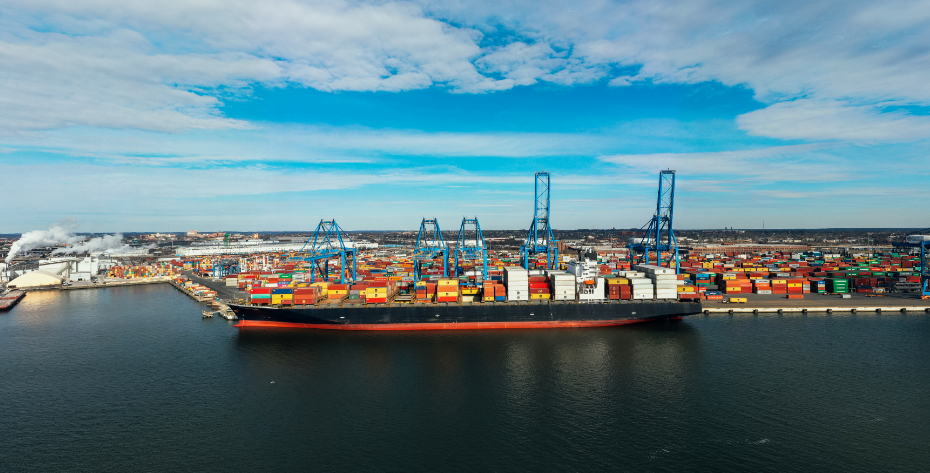
THE alliance has just suspended a trans-Pacific route in a move that suggests shipping companies are preparing to take more aggressive steps in capacity management to balance falling supply and demand.
A crisis in the liner industry?
On THE 20th, THE Alliance members Hapag-Lloyd, ONE, Yang Ming and HMM said that in view of the current market situation, the alliance will suspend the PN3 loop line from Asia to the West coast of North America until further notice, effective from the first week of October.
According to eeSea, the average capacity of the PN3 Circle Line's weekly service deployment vessels is 114,00TEU, with a round-trip voyage of 49 days. To mitigate THE impact of the temporary disruption of the PN3 loop, THE Alliance said it will increase port calls and make rotation changes to its Asia-North America PN2 route services.
THE announcement of the changes to the trans-Pacific service network comes around the Golden Week holiday, following the widespread suspension of flights by the Alliance members on the Asia-Nordic and Asia-Mediterranean routes.
In fact, in THE past few weeks, partners in the 2M Alliance, Ocean Alliance and The Alliance have all significantly increased their reduction plans to reduce capacity on trans-Pacific and Asia-Europe routes by the end of next month in an attempt to halt the slide in spot rates.
Sea-Intelligence analysts noted a "significant reduction in scheduled capacity" and attributed it to "a large number of blank sailings."
Despite the "temporary cancellation" factor, some loop lines from Asia have been cancelled for weeks on end, which can be interpreted as de facto service suspensions.
However, for commercial reasons, alliance member shipping companies have been reluctant to agree to a suspension of service, especially if a particular loop is the preferred option for their large, stable and sustainable customers.
It follows that none of the three coalitions is willing to make the difficult decision to suspend services first.
But with spot container rates, particularly on Asia-Europe routes, falling sharply in the past few weeks, the long-term sustainability of the service is being called into question amid a sharp drop in demand and a chronic oversupply of capacity.
Some 24,000 TEU of new shipbuilding on the Asia-Northern Europe route, which was supposed to be put into operation in phases, has been parked idle in anchorage straight from the shipyards, and there is worse to come.
According to Alphaliner, another 2 million TEU of capacity will be launched before the end of the year. "The situation is made worse by the non-stop commissioning of a large number of new ships, forcing carriers to cut capacity more aggressively than usual to arrest the continued decline in freight rates."
"At the same time, shipbreaking rates remain low and oil prices continue to rise rapidly, making things worse," Alphaliner said.
It is therefore clear that the means of suspension that were previously used so effectively, especially during the 2020 blockade, are no longer applicable at this time, and the liner industry will need to "bite the bullet" and suspend more services to overcome the current crisis.
Maersk: Global trade will rebound next year
Danish shipping giant Maersk (Maersk) chief executive Vincent Clerc said in an interview that global trade has shown signs of picking up, but unlike this year's inventory adjustment, next year's rebound is mainly driven by rising consumer demand in Europe and the United States.
Mr Cowen said consumers in Europe and the US were the main drivers of the recovery in trade demand, and the US and European markets continued to show "amazing momentum".
Maersk last year warned of weak shipping demand, with warehouses full of unsold goods, low consumer confidence and supply chain bottlenecks.
Despite tough economic conditions, emerging markets have shown resilience, particularly in India, Latin America and Africa, he said.
The region, along with other major economies, is reeling from macroeconomic factors such as the Russia-Ukraine conflict and the US-China trade war, but North America is expected to have a strong performance next year.
When things start to normalize and the problem is resolved, we will see demand rebound. Emerging markets and North America are the places with the greatest potential for warming.
But Kristalina Georgieva, managing director of the International Monetary Fund, was less optimistic, saying at the G20 summit in New Delhi that the path to boosting global trade and economic growth was not necessarily smooth, and what she saw so far was even very disturbing.
"Our world is deglobalizing," she said. "For the first time, global trade is expanding more slowly than the global economy, with global trade growing at 2% and the economy growing at 3%."
Georgieva said trade needed to build Bridges and create opportunities if it was to return as an engine of economic growth.
Post time: Sep-26-2023






